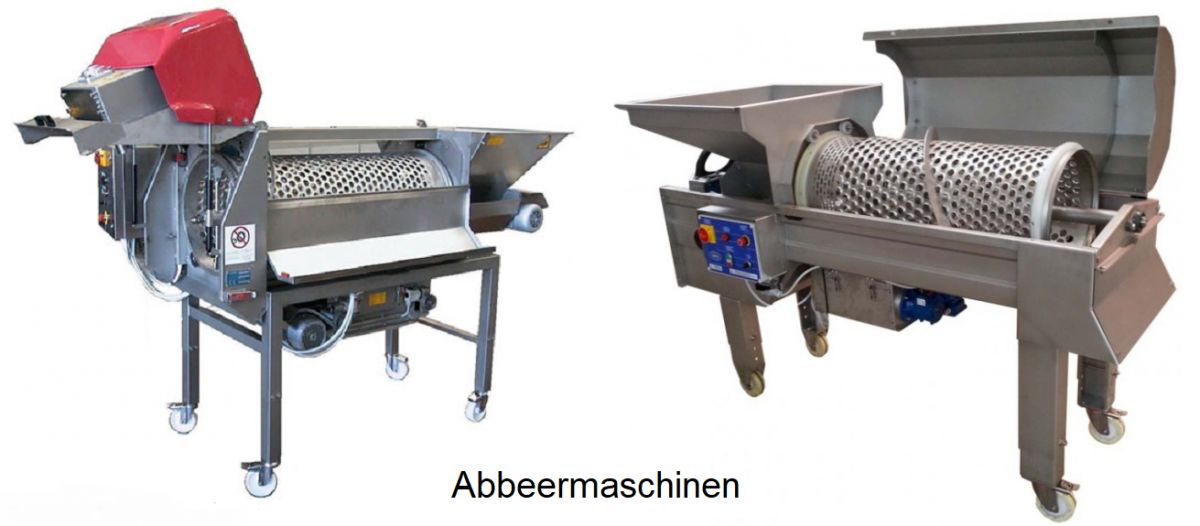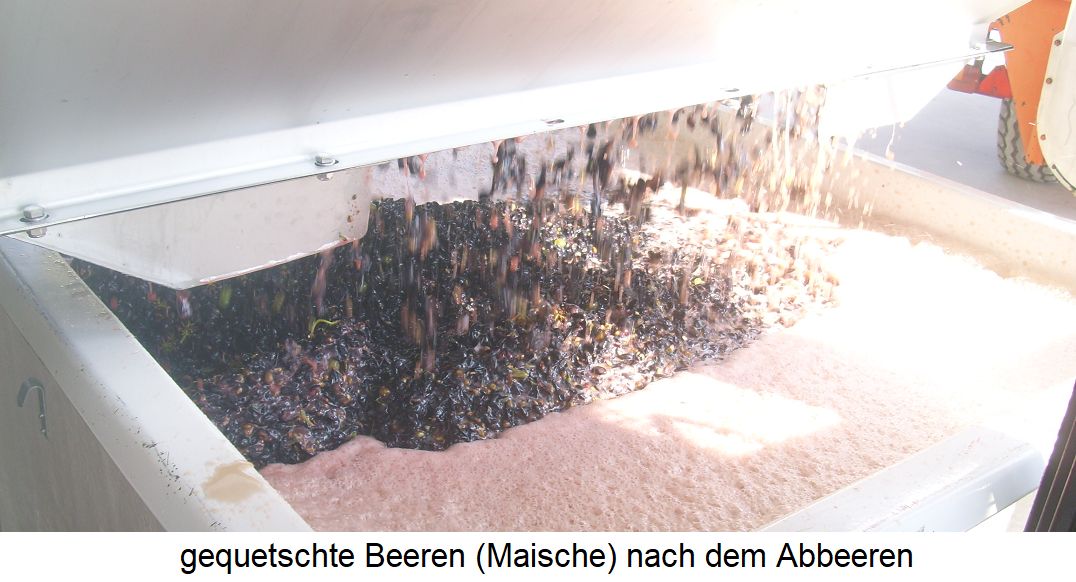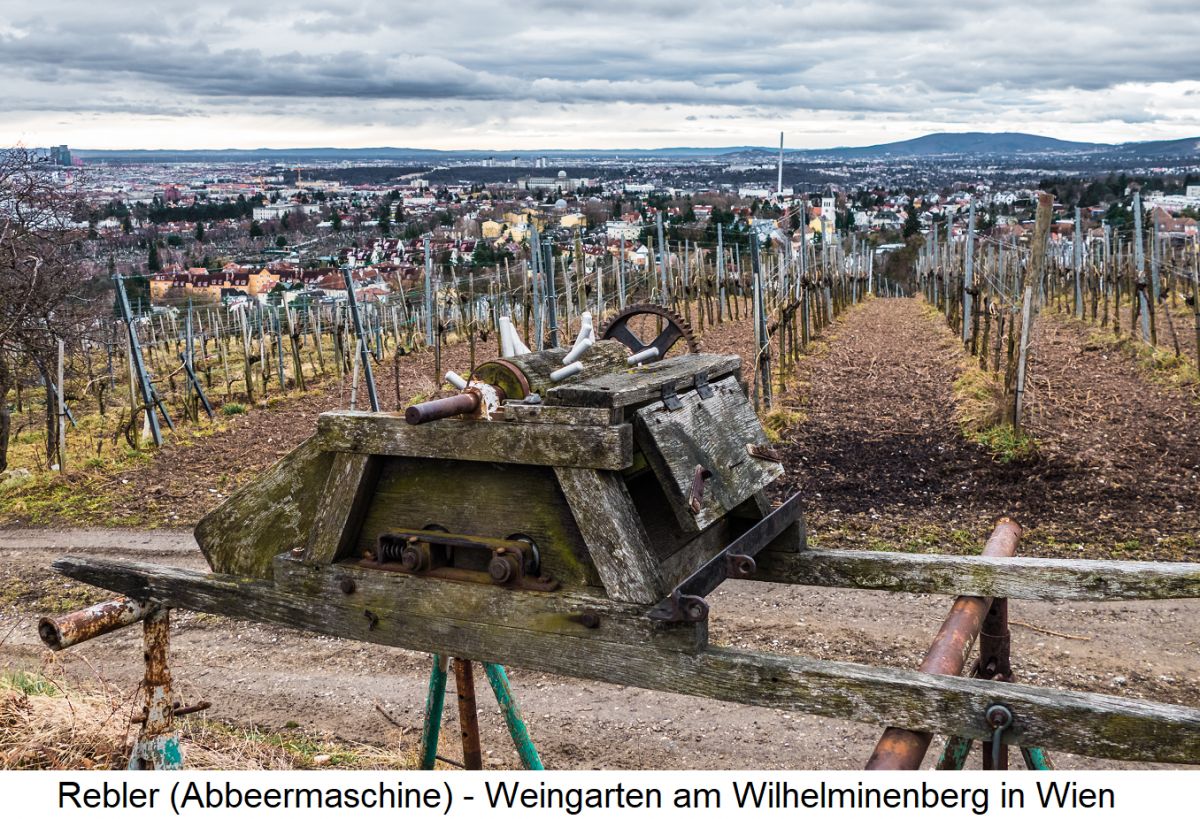Term (also known as destemming) for removing the grape skeleton (rape) or removing the berries from the grapes. This is to prevent the tannins, which are particularly unpleasant in flavour in green grape stems, from getting into the grape must. In earlier times, the grapes were mostly processed as a whole, as removing the stems by hand was too laborious and time-consuming. A "G'rebelter (wine)" used to be colloquially regarded as a special quality in Austria. There is also a "Viennese song" about it, which is often sung at the wine taverns (Buschenschank) in Vienna (Aber g'rebelt muss er sein).

Implementation/process
White wine is almost always destemmed, red wine is mostly destemmed. At the beginning of the 19th century, mechanical devices such as the destemmer (Rebler) and the grape mill (crusher) were invented. In mechanical destemming, the grapes are conveyed through a grid drum by means of a spiked roller, where the berries fall through. Only then are the grapes crushed using a grape mill.
These two devices are sometimes used in combination, although one of the processes can also be omitted. Any unnecessary mechanical stress on the grapes should be avoided as far as possible, as this leads to an increase in lees. The necessity of destemming must therefore be carefully considered.
When grapes are harvested mechanically, the berries are knocked off the bunch and the leaves and stems are removed using a blower. The stems are always removed during the usual mash fermentation for red wine, as they contain a lot of tannins. However, if necessary, whole cluster fermentation (without destemming) is also carried out during red wine production, as is common for carbonic maceration and Macération semi-carbonique. The grapes also remain whole and intact before a special form of pressing - whole bunch pressing.

Destemming yes or no
Another criterion is the condition of the grapes. Fully ripe grapes for Prädikat wines have woody grape stems. As these are neutral in terms of tannins, destemming is not necessary. This also applies to botrytised (rotten) grapes, as the dried berries are difficult to remove from the stems. Destemming - yes or no:
- White winemaking - generally yes, but see exceptions
- Red win emaking - mostly yes, but see exceptions
- Rosé vin ification - generally yes, but see exceptions
- Mechanical grape harvest or full harvest - No, as the stems are already missing
- Lignified grape stems - No
- Fully ripe grapes for Prädikat wines (especially high Prädikat wines) - No
- botrytised, rotten grape material - No
- Unripe grape material - Yes
- Pressing systems with heavy abrasion - Yes
- Whole bunch pressing (white wine production) - No
- skin contact (white wine and rosé production) - Yes
- Longer maceration time - Yes
- Mash fermentation (red wine production) - Yes
- carbonic maceration (red winemaking) - No
- Macération semi-carbonique - (red winemaking) - No
- Whole-cluster fermentation (red winemaking) - No

Further information
For the production of alcoholic beverages, see Champagne (sparkling wines), Distillation (distillates), Speciality wines, Spirits (types), Winemaking (wines and wine types) and Wine law (wine law issues). All work and tools in the vineyard during the vegetation cycle are listed under vineyard care.
Destemmer and grape mill: © Diemme Enologia
Grapes: By Mpmpmp - Own work, CC BY-SA 3.0, Link
Destemmer Wilhelminenberg: © Alfred Deak - Vienna
Voices of our members

There is a vast number of sources on the web where one can acquire knowledge about wine. But none has the scope, timeliness and accuracy of the information in the encyclopaedia at wein.plus. I use it regularly and rely on it.
Sigi Hiss
freier Autor und Weinberater (Fine, Vinum u.a.), Bad Krozingen